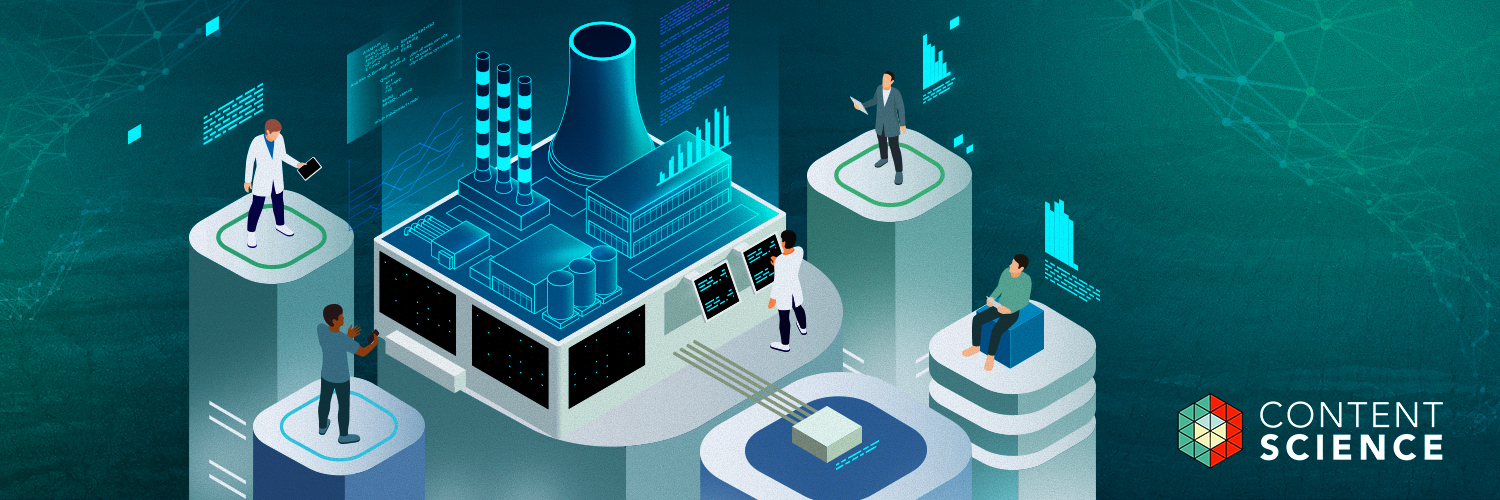
Digital transformation doesn’t mean the same thing today that it did even five years ago. Even though the majority of past efforts have failed, digital transformation remains at the top of executive agendas and budgets. Organizations spent more than $1.59 trillion on digital transformation in 2021 alone. This article explores the characteristics of modern digital transformation because they have sizable implications for content (and content-curious) leaders.
At the same time, understanding these characteristics will help leaders and team members articulate when a digital transformation initiative is not factoring in content well, or at all, and therefore at risk of failing (again). To paraphrase Steve Jobs, if your organization defines the problem incorrectly by omitting the content factor, the digital transformation will not be close to a solution.
Let’s turn to the first characteristic.
1. Frequency: Not a One-and-Done Deal
Not that long ago, digital transformation was a year or multi-year effort to revamp a website or application and was intended to last many years, even a decade. You may have heard (or said) well-intentioned jokes like “Well, when this is over I won’t have to do it again for a looooong time.”
Today, the rapid pace of digital disruption means digital transformation has to happen more frequently. Most organizations are figuring out how to factor in generative AI right now, for example.
More frequent digital transformation has a range of implications for content. For example, any of these issues will slow your organization’s ability to transform.
Content Debt
If your organization has to schlep a bunch of outdated, unoptimized, ineffective content assets from transformation to transformation, you’re at risk of extra costs, delays, and potentially failure. That’s far from sustainable. I like the way Chris Hester of UL Solutions describes how to start addressing this in our recent content operations research.
If you can start managing your content debt — remove content you don’t need anymore, manage the size of your images, start managing your page weight — you can start laying the groundwork for more sustainable content practices.
No Content Inventory, Auditing, or Intelligence
It’s 2023, and the Content Science team and I still encounter plenty of organizations that don’t know what content they have, how long they’ve had it, what it’s about, and how it’s performing. If your organization cannot quickly assemble an inventory and report of your content situation, your digital transformation will be at risk of planning with only partial information. Making digital transformation decisions in the dark puts the effort at high risk of delays and failure.
CMS Mushrooming
If you have to use more than one hand or foot to count the number of content management systems (CMS) at your company, chances are you have a problem. When we come across this situation, usually the systems are not interoperable and exasperate the other two issues above (content debt and no inventory or intelligence), which intensifies the risk to your digital transformation if not addressed.
The proliferation of CMSs is a symptom of siloed content operations, meaning different marketing, communication, and support departments might each have their own CMS. This siloed approach was never good, and it’s especially ineffective now to execute content strategy that’s integrated across every phase of customer and employee experiences.
Now let’s turn to a second implication for content in modern digital transformation.
2. Value Creation: Intangible Assets FTW
Smart companies such as Mailchimp have been aware of intangible assets such as a compelling brand, unique data, and distinct intellectual property for many years. Today most organizations are recognizing that these intangible assets are integral to the value they provide, and they’re taking it seriously. Even CFA Institute, which issues the highly rigorous Chartered Financial Analyst credential, acknowledges the trend:
Intangible assets are increasingly critical to corporate value [even though] current accounting standards make it difficult to capture them in financial statements.
Wise companies want digital transformation to enhance that value from intangible assets in many ways.
McKinsey, for instance, has uncovered a strong correlation between business growth and increasing value through intangible assets. The chart below highlights what the successful organizations are doing differently. When digital transformation helps address these items, it’s driving value creation.
The connection between content and intangible assets is incredibly exciting. That connection means it’s hard to overstate the impact effective content can have on business value.
- What brings brands to life? Content
- What generates first party data and unique insights about customers and content? Content interactions
- What is the substance of much intellectual property and thought leadership? Content
- What is the driver for ongoing, long-term customer relationships? Content personalized across many channels
- What shapes brand or organization reputation? Content
- What communicates any data or insight? Content
- What do prospective employees rely on in the hiring process? Content
- What ties closely to marketing, product, design, and other organizational operations? Content operations
- What is the fuel for smarter content decisions, content optimization, and data-informed content governance? Content intelligence
- What trains generative AI and other AI forms? Content standards, characteristics, and effectiveness data.
I think you get the idea. So, if your organization’s digital transformation effort wants to increase value by improving or expanding its intangible assets, that effort must prioritize content.
Now, let’s turn to a different type of implication for content.
3. Scope: Beyond Website Redesign + Toward Innovation
For many organizations, a past digital transformation seemed like little more than a glorified website redesign. Modern digital transformation must factor in an entire digital presence, which often includes (and is not limited to)
- Multiple websites, portals, and microsites.
- Multiple applications, including mobile apps.
- Email.
- Social channels.
- Chat bots.
- The backend systems, often with at least a few legacies.
Additionally, digital transformation, technology innovation, and new business models need to go hand in hand…in hand. For example, we worked with a large information technology hardware and services company and iconic brand that wanted to launch what appeared to be a new solution. Upon further discovery, we realized that new solution was really a new business model, a cloud or SaaS model. The innovation in business model needed to drive innovation in their approach to content, from strategy through operations. The way content worked for transactions and hardware services would not work for long term subscriptions. Because we articulated the need to align the three areas of business model innovation, technology innovation, and digital transformation, we won support for a new and very different end-to-end content approach.
It’s tempting to think that only technology companies have to deal with this expanded alignment. But every company is having to become a technology company and, consequently, needs to think bigger about the scope of digital transformation. As another example in a different industry, we recently worked with one of the world’s largest retailers to significantly improve the customer experience regarding order status. After extensive analysis, we discovered a big disconnect between the communications (content) the retailer aspired to deliver and the underpowered, homegrown applications driving email and mobile communications. Any innovation in the customer experience through content required technology innovation.
And this type of thinking matters for other kinds of organizations, too. For instance, we contributed much to a comprehensive change for Charles and Lynn Schusterman Family Philanthropies that spanned their name, brand identity, website, email, social media, technology platforms, and more. The communications and technology leaders stayed admirably aligned as they deftly guided the philanthropy through not simply a transformation, but a metamorphosis.
That leads us to the last characteristic for modern digital transformation.
4. Metamorphosis: Better, Not Just Different
I admit this implication is somewhat aspirational, but I believe it’s achievable because the stakes and investment in digital transformation are higher than ever. It’s time to strive for metamorphosis.
Technically, transformation is a change from one thing into another thing. The different thing could be better, worse, or the same as the original thing. Metamorphosis is a change from one thing into a better thing (unless you are Franz Kafka).
I don’t think any of us find change simply for the sake of change to be motivating. But many of us find a change that feels like a significant progression to be quite compelling. This principle is why consumers are rightly growing weary of the streaming wars, for instance. The shift from cable to streaming for television and movies was clearly better in many ways for many consumers. The combination of changes in content, experience, technology, and business model added up to a meaningful improvement for consumers. Now, shifting from one streaming service to another or maintaining several streaming services is a much harder sell. A new streaming service might be different, but it’s not meaningfully better (at least not yet).
Right now, I’m excited about the range of AI (generative and otherwise) to spark new drive to create things that are truly better. Yes, there will be failures and drawbacks to address. But we’re also going to see what we used to think was impossible become reality.
And as every company faces more frequent and more expansive digital transformation with the potential to add exponentially more value, every company can approach content in a better way. I think it’s worth considering some wise words from poet and journalist Robin Morgan:
People are capable of profound metamorphosis, though unfortunately they rarely avail themselves of this genius.
As content (or content-curious) leaders, you can achieve what is rare. You can influence your team members, your stakeholders, and your executives to not simply change the content approach in a digital transformation, but to become profoundly better at content. You can lead them into what I call content genius in The Content Advantage.
I’m pressed to think of a more rewarding accomplishment.
Events, Resources, + More
The Ultimate Guide to End-to-End Content
Discover why + how an end-to-end approach is critical in the age of AI with this comprehensive white paper.
The Content Advantage Book
The much-anticipated third edition of the highly rated book by Colleen Jones is available at book retailers worldwide. Learn more!
20 Signs of a Content Problem in a High-Stakes Initiative
Use this white paper to diagnose the problem so you can achieve the right solution faster.
Upskill with Content Science Academy
Training for modern content roles through on-demand certifications + courses or live workshops.







Comments
We invite you to share your perspective in a constructive way. To comment, please sign in or register. Our moderating team will review all comments and may edit them for clarity. Our team also may delete comments that are off-topic or disrespectful. All postings become the property of
Content Science Review.